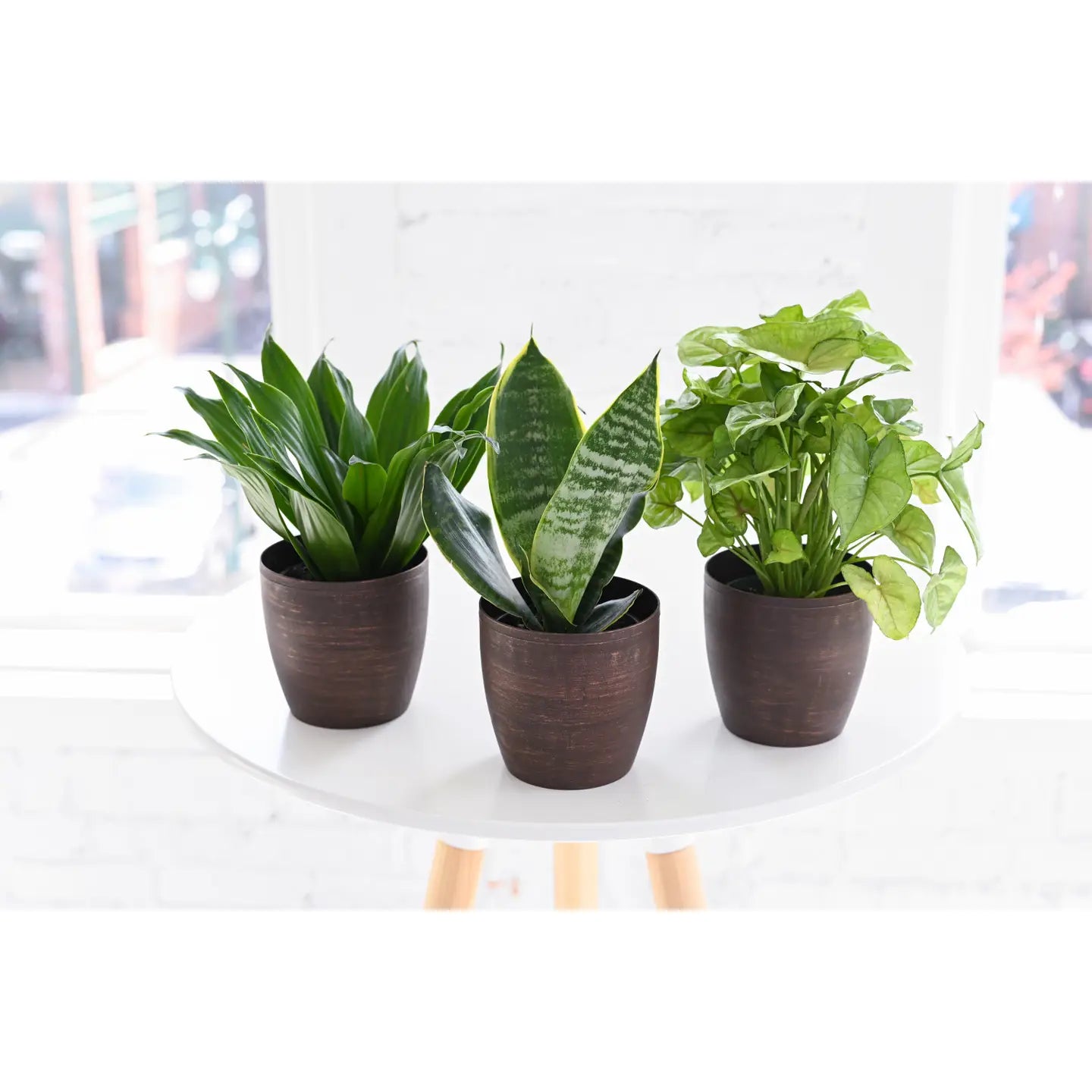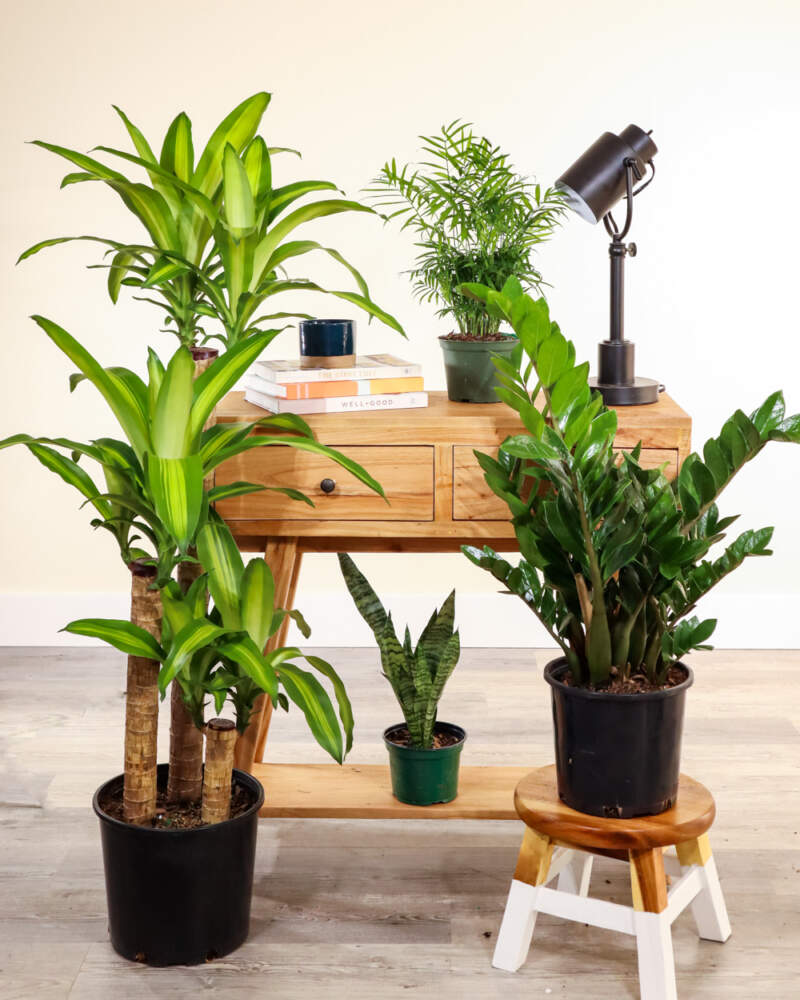The Best Low-Light Indoor Plants for Beginners and Busy Plant Owners
The Best Low-Light Indoor Plants for Beginners and Busy Plant Owners
Blog Article
Discover the Keys of Low-Light Indoor Plants and Exactly How They Enhance Your Setting
Low-light indoor plants have actually garnered enhancing attention for their one-of-a-kind capacity to enhance both visual allure and environmental quality within offices and homes. These resistant types, including the Serpent Plant and Tranquility Lily, not just prosper in challenging lights conditions but additionally play a critical function in air filtration and emotional well-being.
Benefits of Low-Light Indoor Plants
Although many individuals think that interior plants require bountiful sunlight to thrive, low-light interior plants offer a multitude of benefits that make them ideal for numerous atmospheres. Among the main benefits is their flexibility; they can grow in spaces with restricted all-natural light, such as workplaces, cellars, or rooms with little home windows. This feature allows individuals to boost their surroundings with plant, contributing to boosted aesthetic appeals without the need for substantial lights adjustments.
Furthermore, low-light interior plants can significantly boost indoor air high quality by filtering system unsafe toxic substances and releasing oxygen, making living rooms healthier. Research study has revealed that particular selections can soak up pollutants, therefore advertising a cleaner atmosphere. Furthermore, they can enhance mental wellness by minimizing stress and anxiety and increasing efficiency. The existence of plants has actually been connected to higher sensations of tranquility and focus.
In addition, low-light plants often call for less upkeep than their sun-loving counterparts, making them optimal for hectic people or those brand-new to gardening. Their strength permits them to prosper with very little intervention, thus providing a rewarding experience for plant fanatics and amateurs alike. In summary, low-light interior plants serve both functional and visual purposes, making them valuable enhancements to any kind of space.
Leading Low-Light Plant Selections
Low-light indoor plants been available in a range of types, each offering special attributes and benefits matched for dim environments. Among one of the most prominent varieties is the Serpent Plant (Sansevieria), known for its air-purifying abilities and building fallen leaves. This resistant plant prospers on overlook and can endure a large range of light problems.
Another superb option is the ZZ Plant (Zamioculcas zamiifolia), which features shiny, dark eco-friendly leaves and is extremely drought-tolerant. Its adaptability makes it a preferred for offices and homes with minimal sunlight.
The Pothos (Epipremnum aureum) is likewise a top competitor, with its trailing vines and heart-shaped fallen leaves - Best low-light indoor plants. This versatile plant can be trained to climb or waterfall, including visual passion to any kind of room

Care Tips for Low-Light Plants
Taking care of low-light interior plants needs a nuanced understanding of their specific demands to make sure optimal development and vitality. It is vital to pick the best potting mix, as a well-draining dirt is important to protect against origin rot. A mix developed for houseplants, commonly containing peat moss and perlite, functions well for the majority of low-light ranges.
Watering is another crucial facet of care. Low-light plants normally call for much less frequent watering compared to their sun-loving equivalents.
Fertilization ought to be approached with care. Throughout the growing period, a watered down fluid plant food can be applied monthly, however in wintertime months, many low-light plants go into dormancy and need little to no fertilizing.
Last but not least, it is very important to occasionally cleanse the leaves to eliminate dirt, permitting for better light absorption. By sticking to these care suggestions, you can cultivate a growing setting for your low-light interior plants, enhancing both their appearance and longevity.
Enhancing Air Quality With Plants
Interior plants play a considerable function in enhancing air quality within homes and office. Through the process of photosynthesis, these plants take in carbon dioxide and release oxygen, adding to a much healthier ambience. In addition, particular low-light interior plants possess the ability to filter damaging contaminants, such as benzene, trichloroethylene, and formaldehyde, which are frequently discovered in indoor environments.

Additionally, the existence of interior plants can boost humidity levels, which helps reduce dry skin and breathing issues, further improving overall health. This ability to enhance air top quality not just promotes physical health yet also supports psychological wellness.
Including low-light interior plants right into your living and working spaces can bring about a navigate here more invigorating and vibrant environment (Best low-light indoor plants). Purchasing these natural air cleansers is a basic yet efficient strategy for enhancing interior air high quality and promoting a much healthier way of life
Developing a Tranquil Indoor Area
The combination of plants right into living spaces not just improves air quality yet likewise adds to a relaxing atmosphere. Low-light interior plants, such as snake plants and pothos, are specifically efficient in creating a calm environment, as they grow in conditions that might or else be inhospitable for various other greenery. Their rich foliage supplies a soothing visual, decreasing stress and anxiety and promoting leisure.
Including these plants into your home or workplace can evoke a feeling of tranquility and wellness. Strategically positioning them in areas where you invest substantial time, such as living spaces or workspaces, enables an immersive experience with nature, which has actually been shown to enhance state of mind and cognitive function.
In addition, the gentle motion of fallen leaves in action to air movement can produce a vibrant aesthetic element that improves the total ambiance. Think about making use of a variety of plant heights and textures to add deepness and passion to your space. With thoughtful placement and treatment, low-light indoor plants can transform any kind of location right into a serene shelter, cultivating not only aesthetic contentment but also emotional and emotional wellness.

Conclusion
Including low-light indoor plants right into various environments yields substantial benefits, consisting of improved air high quality and enhanced aesthetic allure. These hardy types not just flourish in minimal light however additionally add to a relaxing atmosphere, promoting psychological and psychological wellness. By choosing appropriate ranges and applying proper care methods, people can successfully cultivate a peaceful interior room that fosters wellness and performance. The transformative power of low-light plants underscores their value in improving both household and work settings.
Although several individuals presume that indoor plants require abundant sunshine to grow, low-light indoor plants provide a wide range of benefits that make them perfect for various settings.Additionally, low-light indoor plants can significantly improve interior air high quality by releasing and filtering system dangerous toxic substances oxygen, making living spaces healthier. In addition, specific low-light interior plants have the ability to filter harmful toxins, such as benzene, trichloroethylene, and formaldehyde, which are typically located in interior environments.
Low-light interior plants, such as serpent plants and pothos, are especially effective in producing a serene setting, as they flourish in problems that may or else be inhospitable for other plant.Incorporating low-light interior plants into different environments yields considerable benefits, including boosted air quality and boosted why not try these out aesthetic allure.
Report this page